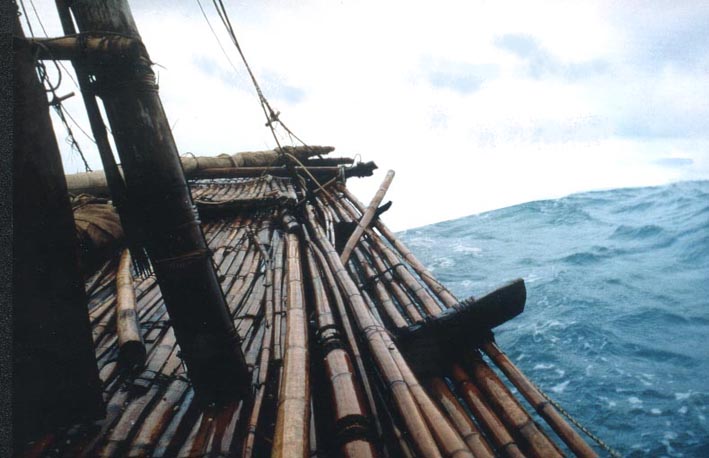The First Mariners Project

This is the homepage of the First Mariners Project, which investigates the Pleistocene origins of seafaring. The project comprises a series of archaeological studies and replicative expeditions with primitive vessels in specific parts of the world. Its purpose is to determine the minimum technological requirements to cross those sea barriers hominins have successfully crossed during the Ice Age, to acquire a reliable measure of human technological and cognitive competence at the time in question.One of the most significant finds in the history of archaeology is the discovery that hominins of more than 850 000 years ago managed to cross the sea to colonise a number of Indonesian islands. Nusa Tenggara, the islands east of Bali, have never been connected to either Asia or Australia, but they were found to have been occupied by Homo erectus as well as by several endemic species of Stegodonts (extinct elephants) early in the Ice Age. Until recently, it had been assumed that the first sea crossings occurred no more than 60 000 years ago.
These crossings of several sea barriers involved the use of watercraft, because sea straits cannot be crossed without propellant, so this was the first time in human history that our ancestors entrusted their destiny to a contraption designed to harness the energies of nature. All human development followed on from that first triumph of the human spirit; it set the course of the human ascent right up to the present day. In comparison to this achievement, Neil Armstrong’s ‘giant leap of mankind’ was indeed a small step for man.
We know that these sea journeys occurred, and we know approximately when. But we do not know how they were accomplished. This project examines that question in great detail, in Indonesia and in other parts of the world. For this purpose, a number of rafts, each designed differently, are constructed with Palaeolithic stone tool replicas, and it is attempted to sail them across stretches of sea known to have been crossed in the Ice Age, in Indonesia, the Mediterranean, in Japan and off California. The scientific data collected by this project are to form the basis of a multiple scenario study that should yield adequate information to determine the technology of early maritime navigation. This in turn is thought to provide reliable information about the maximal technological, cognitive, intellectual and even linguistic abilities of very early humans at specific stages in their development.
The First Mariners project was commenced in 1996, and the first full-scale sea-going bamboo raft was launched in February 1998. The Timor Sea was crossed on the Nale Tasih 2 in December 1998, replicating the first landfall in Australia perhaps 60 000 years ago. In October 1999, the project was extended to the Mediterranean region and two experiments were conducted in Morocco. In January 2000, a primitive raft with 14 men, the Nale Tasih 4, repeated the first known crossing of the sea, which occurred more than 850 000 years ago between Bali and Lombok, Indonesia.
By 2000 this project had constructed and sailed six rafts built either entirely or partly with Palaeolithic stone tools, and equipped with replicas of Ice Age artefacts. In 2004, National Geographic helped conduct the seventh experiment, replicating the first crossing from Sumbawa to Komodo prior to 840,000 years ago. In 2008, with the help of BBC, Sumbawa was reached from Lombok on a simple raft propelled by eight men. Further expeditions are to take place in the Mediterranean and elsewhere. This series of experiments will be continued at least until 2020. It already is the largest endeavour ever undertaken in replicative archaeology.
The First Mariners Project is conducted under the auspices of the International Institute of Replicative Archaeology (INRA), a non-profit organisation of specialist researchers dedicated to the study of early technologies and taphonomic processes in archaeology. It welcomes dialogue with like-minded researchers and organisations.
December 2003